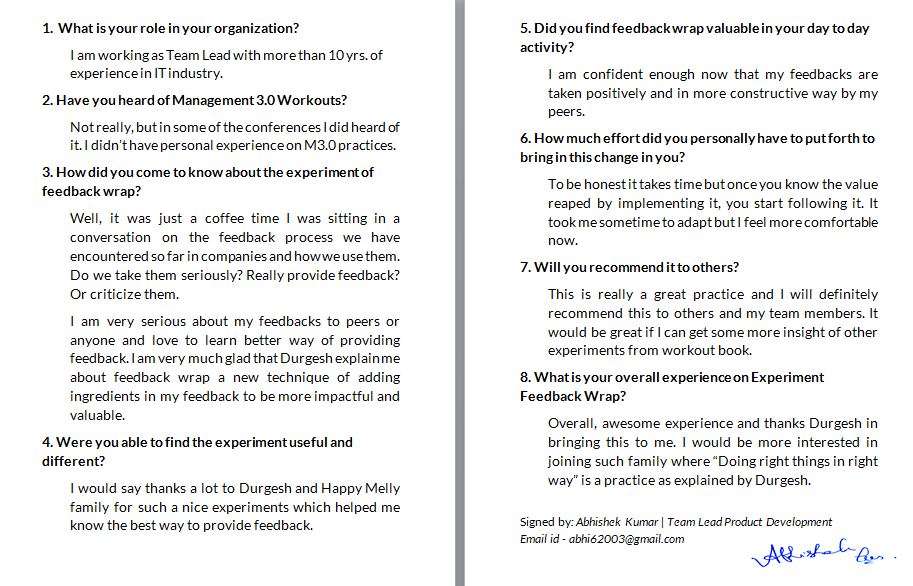by Durgesh Kumar Mishra
I am an Agile Coach by practice. I visualize everything in the agile way; where happiness and culture are two major ingredients. Happiness at work is a win-win situation. Happy, engaged people are healthier, more productive; they have more ideas, are more likely to contribute over and above the responsibilities of their job and perform to their best.
If your team is happy – you and all around them are more likely to be happy.
In my previous article I talked about the value of using personal maps and how they can help in driving the behaviour of co-workers or individuals. This time I want to share my experience with one of the best practices from Jurgen Appelo’s Management 3.0 #workout: The Feedback wrap.
Problem Statement: Agile or agility is about Culture and People, not process. To achieve agility, we need a “Cultural and Mind Shift”. In my day-to-day activity I have observed that most organizations structure different frameworks to achieve their deliverables.
Yet, when the process and tools to achieve those deliverables have been imposed on a team, they are not always used effectively, or indeed followed up correctly. The lack of proper training, or knowledge of the process, results in the team suffering during the annual appraisal.
To alleviate this problem, I highly recommend trying the “Feedback Wrap”. Yes, a wrap with basic ingredients, which add value to instant feedback for teams, friends, even family! I love this concept and feel like it’s applicable at any moment in life when you need to give “Feedback”.
My Feedback Wrap case story
I wanted to share a case story of a real Feedback Wrap experiment that I used during a client coaching session. Due to workplace compliance the company will remain anonymous.
Initial Observations
In one of the teams I was coaching, I found that although the team had a very good understanding of ‘Process and Tools’, they didn’t seem to be working well as a team, and their behavior towards their peers was very volatile. I also noticed, that their behavior would change based on feedback shared during Scrum Retrospective meetings, or simply in their day-to day-conversations.
Scrum never talks about the “HOW” aspect of resolving issues and I found that the conflicts and behavior change was due to how the feedback was shared amongst team members. This was an opportunity for me to get on the floor with the team and share the benefits of using the “Feedback Wrap”.


